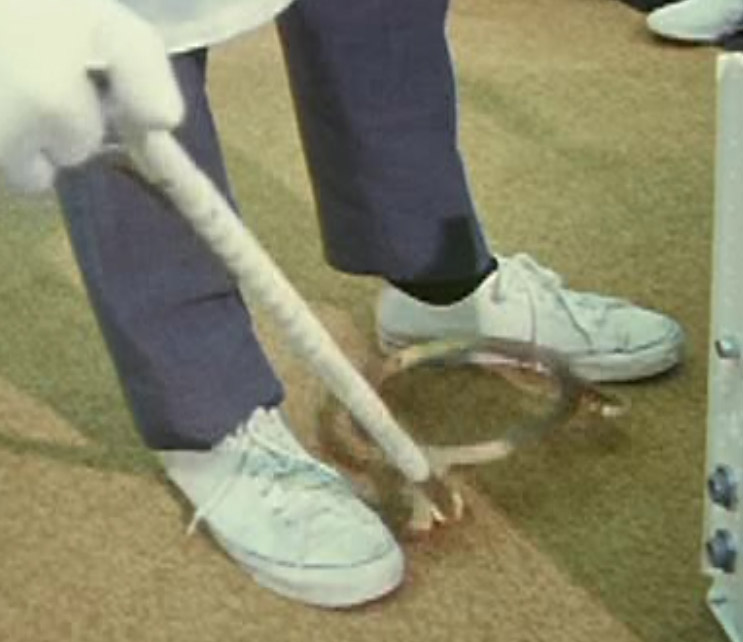
PSE Stool
Last revised 1 July 2013.
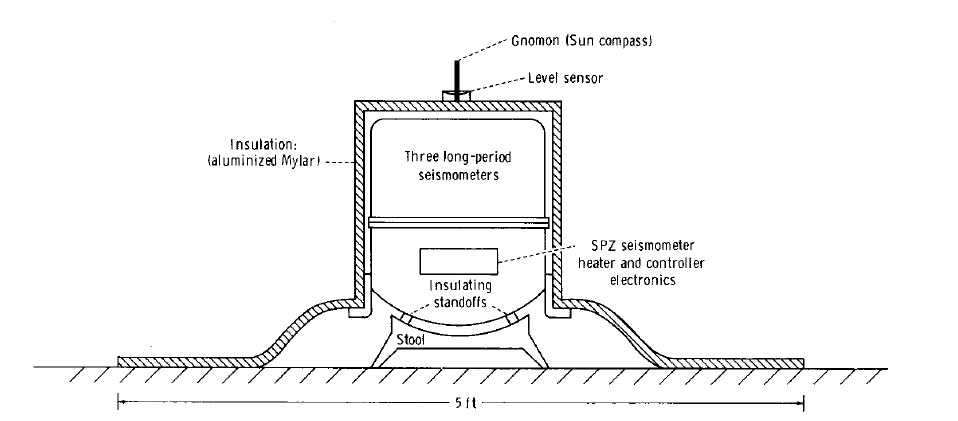
Figure 3-1 from the Apollo 12 Preliminary Science Report is a schematic drawing of the Portable Seismometer Experiment, with the round-bottomed, cylindrical canister containing the seismometers and electronics sitting on a supporting stool. |
The following
description can be found on page 2-82 in the 1969
ALSEP Familiarization Manual:
2-61. PSE Leveling Stool. The leveling stool is a short tripod with three thermal insulators on its upper end. These insulators, together with the rounded bottom of the sensor assembly, form a ball and socket joint which permits manual leveling of the sensor assembly to be accomplished by a single astronaut to within five degrees of the vertical. The insulators also provide the required degree of thermal and electrical isolation of the sensor assembly from the lunar surface, while transmitting surface motion up to 26.5 Hz, or more, to the sensors with negligible attenuation.
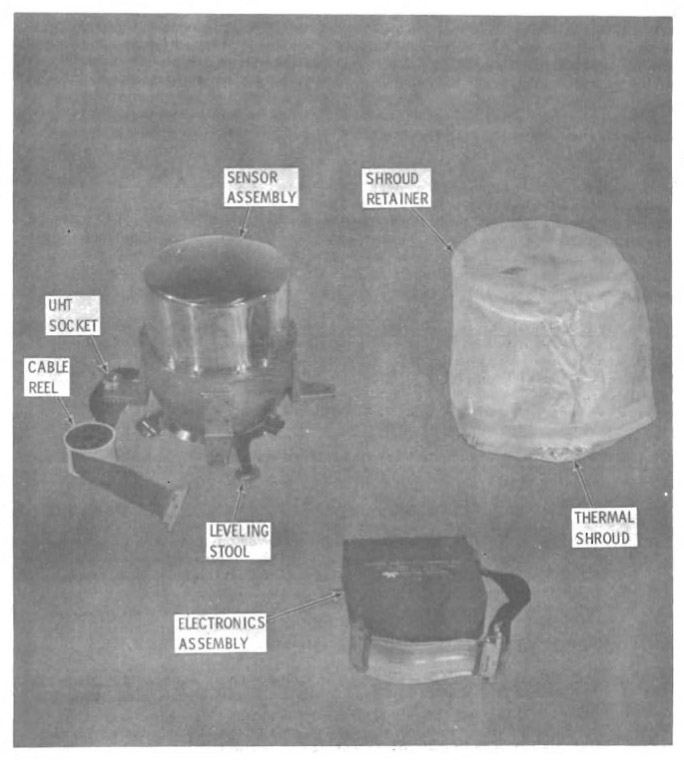
| Figure 2-43 from the 1969
ALSEP Familiarization Manual, showing the canister
- without the thermal shroud in place - on the
stool. The electronics assembly in the foreground
was installed in the Central Station pre-flight. |
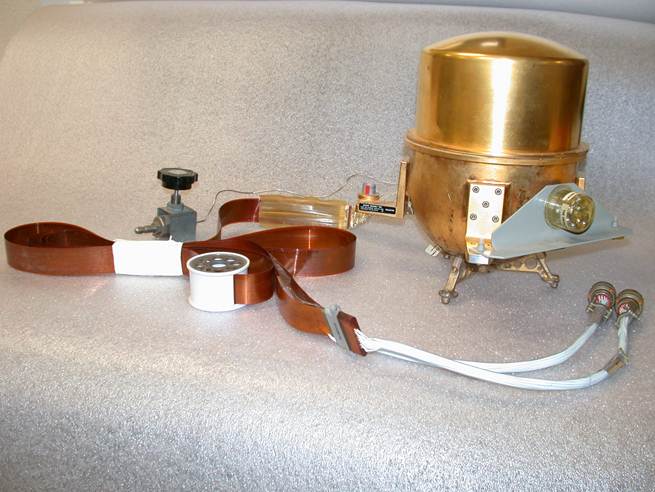
| PSE unit in the
collection of the National Air and Space Museum.
This unit was stored by Bendix Aerospace until NASA
transferred the object to the Smithsonian in 1982.
The two connectors were connected to the ALSEP Central
Station before stowage in the Lunar Module. The
purpose of the small grey box with a mail electrical
plug and a black, top-mounted control knob is
unknown. Medium: Beryllium. Description:
Cylindrical metallic container with removable top
containing mechanical and electronic components of a
working seismometer. Dimensions: Cylinder: 11
7/16 (h) x 9 1/16in (dia.), 25.4lb. (metric values: 29 x
23cm, 11.5kg). Image courtesy Allan
Needell, National Air and Space Museum. |
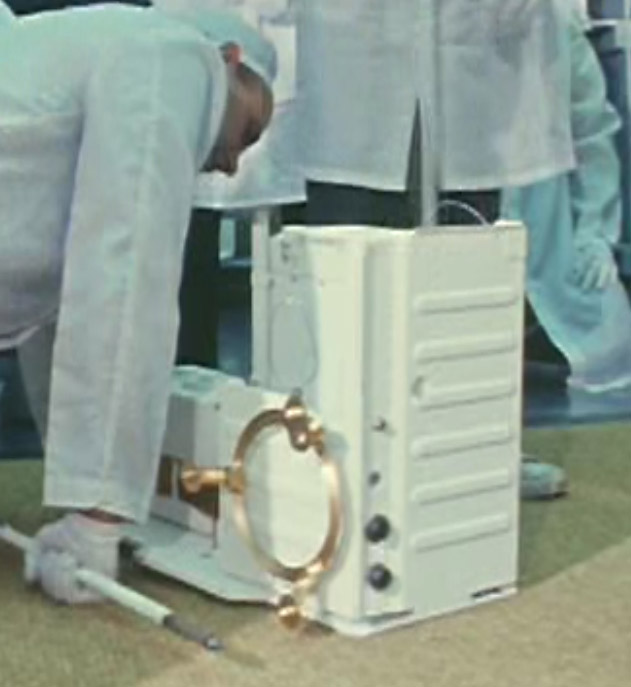
| Detail from a training
film showing Al examining the SIDE pallet during an
ALSEP deployment familiarization session. Frame capture
by Thomas Schwagmeier at 26 min 30 seconds in
the 'training' section of Disk 1 in the Spacecraft Films
3-disk, 2005 Apollo 12 DVD set. See, also,
an alternate view from
27 min 04 sec in the training film. Used with permission
from Mark Gray, Spacecraft Films. (Click on the image
for the full frame). |
The primary purpose of the PSE stool was to
prevent thermal contact between the canister and the ground;
and, thereby, reduce motions induced by temperature differences.
The stool was mounted on the side of the SIDE pallet. The
gold colored stool was supported by three legs, which can be
seen pointing to the left in the image above. The top of the
stool was an opening ring to accomodate the rounded bottom
of the PSE canister. On the Moon, Al Bean dug a small pit
under the spot where he wanted to place the stool, to further
decrease the chance of thermal contact between the canister and
the ground.
| Detail from a frame
capture at 26 min 51 sec in the training
film. Al has the end of the UHT (Universal
Handling Tool) fitted into the UHT socket built into
the stool. This allows him to move and position
the stool from a standing position. (Click on
the image for the full frame.) |

| Detail from a frame
captured at 27 min 10 seconds in the training
film. Pete is fitting a UHT in the socket.
We are looking at the upper surface of the
stool. The white dot on the upper surface at the
upper left may be one of the three 'insulating
standoffs'. (Click on the image for the full
frame.) |
